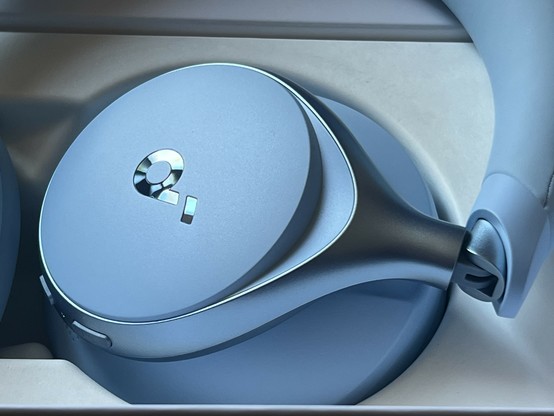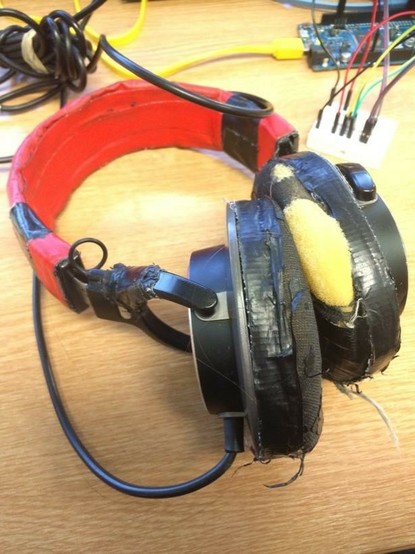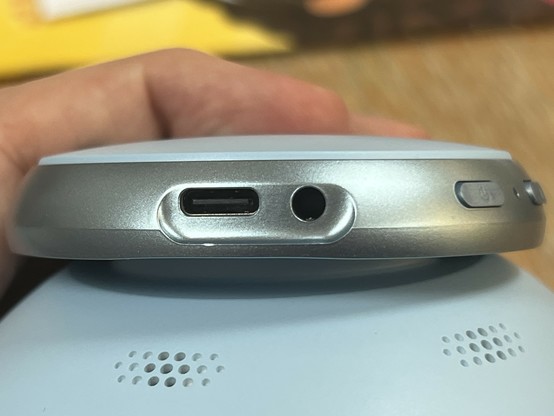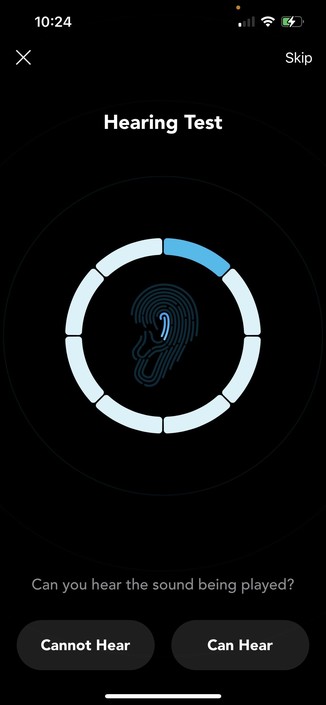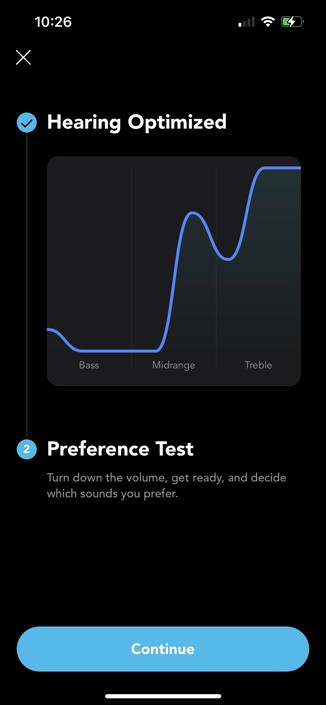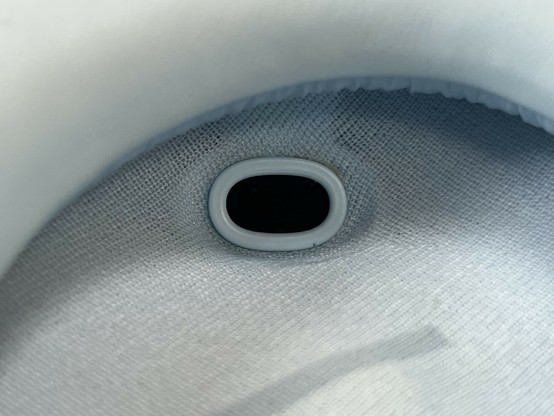Soundcore Space One Noise Cancelling Headphones Reviewed
I’m going to have to level with you- I jumped at the chance to test the Soundcore Space One headphones because I liked the colour. It’s not the first time I’ve made a decision based on style over technical details. It probably wont be the last. I’m an iPhone user, after all.
It turned out for the best though, because Soundcore’s Space One Active Noise Cancelling Headphones (whew that’s a mouthful) are actually pretty good. There are few things that appeal to me more than products that look good, and back those looks up with performance to match.
I don’t think it’s controversial to say I really like the look of these. Though it’s a little bit of a shame the stuff that looks like metal… isn’t.
Look ‘n’ Feel
The Space One are fairly chunky, mid-range, over-ear style headphones that come in Jet Black, “Latte” Cream or (they say Sky, I say Baby, baby!) Blue. They sport a fairly robust-feeling, plastic construction with a two-tone matte vs semigloss (kind of pretending to be metal) finish and a slightly textured grip around the edge of each earcup. They’re foldable, though Soundcore don’t make this nearly as clear as they should in their product page, and the earcups tilt independent from the folding hinges to get a comfortable, flush fit regardless of your head-shape. The headband and ear pads seem to be the same, faux leather, coloured-keyed to the plastic. The headband stitch lines are a little rough, though it’s not something you’d notice without close inspection.
I’d forgive you for thinking plastic means low quality, but the Space One feel pretty decent. They flex where they should and don’t where they shouldn’t, simple. They also weigh, according to our kitchen scales, just 250 grams.
Where they fall short is repairability. I’ve tested a lot of headphones over the years, and I’ve probably destroyed the headbands and ear cups on a good 90% of them. The cups and band on Space One will no doubt be the first thing to see wear and tear, and it pains me to report that neither seem replaceable. While this isn’t unusual for headbands, since they’re quite integral (velcro, anyone!?) I can neither find replacement cups, nor find any means of removing those on the Space One. I’m a little sad about this, since that beautiful Sky (Baby, damn it!) Blue will wear out eventually and I’ll have no option but to chuck ‘em in the bin, or try to salvage some electronics for Bluetooth tinkering. Suffice to say, headphones without replaceable ear pads are like cars without replaceable tires.
Headphones without replaceable ear pads are a bit like cars without replaceable tires. The pads get so much wear, and grunge, and hair grease and hair products and maybe jabbed by glasses or poked by keys. These were my Roland RH300 before I finally gave them up- pads were replaceable, but I am a cheapskate.
Sound
While their longevity might be debatable, at least Soundcore’s Space One sound good. After a few months of testing exclusively earphones, switching back to a pair of over-ear headphones is quite a profound difference. The size of the Soundcore Space One means they can push some serious bass, and as a result I’ve been grabbing them more and more often for both music listening and gaming on SteamDeck. I found them capable of handling Daft Punk’s Doin’ It Right and Karsh Kale’s Distance with all the oomph you’d expect at this price, and they do Mr Oizo’s Flat Beat the justice it deserves and capably deal with all the nuance and texture of Peter Gabriel’s Love Can Heal… Right, uh, I just got lost listening to music there for a moment. That’s a good sign, right? Where were we?
Another somewhat hilarious consequence of these big, over-ear headphones is there being enough room underneath to wear an earphone. Bear with me a second here I’m serious- it was a great way to listen to a podcast via my phone while getting videogame sound effects and music mixed in from the Space One.
In profile the Space One ear cups kinda look like Star Wars droids.
There’s a USB Type-C port for charging, and a 3.5mm jack for traditional wired audio. Unfortunately USB Type-C does not support a data connection. Slightly more frustrating, plugging your headphones into a charger will disable the Bluetooth connection. This is frustrating since I’ve got headphones that will both still work with USB connected and switch to using the USB connection for audio- granted they were somewhere north of three times the price of the Soundcore Space One so I can’t be too upset.
Noise Cancelling
The headline feature, it’s right there in the product title, of the Soundcore Space One headphones is active noise cancellation. I can’t keep typing all those words, though, so I’ll call it ANC. ANC is techno-babble for recording ambient sound, inverting the waveform and mixing it into your headphones such that the resulting sound waves physically cancel the ambient noise. Doing this, however, requires time, and as a result it tends to work effectively only when the noise pattern is repetitive- this might include fan sounds, engine sounds, road noise and that wearisome aeroplane rumble. It does not, unfortunately, cancel your kids tearing from room to room and peeling the paint off the walls with impossibly pitched screams. Typically the benefits of ANC are mixed with passive noise reduction. That’s the term for noise muffled simply by wearing the headphones, and sticking a lump of plastic, circuit boards and cushioning between your ears and the sound source.
When you don the Soundcore Space One (in their turned-off state), two things will happen- the world will get a little quieter, but you may also notice either the sudden presence of a deep rumbling sound you didn’t notice before, or that the deeper sounds in your environment have got – relatively – louder. This is passive noise reduction, where the headphones effectively block some lower-frequency sounds and re-contextualise the higher ones. Turning on the Space One and enabling ANC will suddenly cut out a much wider swath of noise. For example, if I turn my kitchen extractor fan on full-blast (it’s obnoxiously loud and grating) and put on the Space One, it’s immediately and noticeably dampened. Turning them on and enabling ANC abruptly cuts most of the fan noise almost to imperceptible levels, leaving only a mid-pitched hiss. Music at about 75% volume helps mask the remaining noise and, as such, I can stand directly next to the loud fan and mostly tune what’s left – a sort of distant ocean or crowd noise sound – out. The same applies to a kettle boiling and a washing machine spinning. If, like me, at this very moment you’re perched at the kitchen table trying to carve out a warm home office, you’ll appreciate being able to drown out a majority of ambient household distractions and the Soundcore Space One do this very well. Now, uh, is my kettle boiled?
Software
As is tradition, the Soundcore Space One are supported by an app. In this case the app is simply called “soundcore” and handles everything from changing modes – Noise Cancellation, Normal, Transparency Mode – to assigning custom EQ profiles. It also includes guided, personalised EQ creation- known as HearID- which walks you through a range of hearing and preference tests. The hearing test takes a little while, running through a range of tones at various volumes (you’ll notice it’s quite familiar if you’ve ever taken a medical hearing test) and is followed by some A/B testing of music. I rattled through the tests but could hear absolutely no difference between the A and B versions of the music. The resulting profile boosted the treble significantly, which is consistent with my age – I think – but inconsistent with my hearing test results from some years ago. The final profile certainly sounds different to me, but I can’t confidently say that it sounds better.
I ran through the HearID setup but it didn’t really make a world of difference for me. I can hear the resulting EQ profile, but is it better? I’m not sure.
The app also includes settings for “Easy Chat,” a neat little feature that uses a concealed touch sensor on the left-hand ear cup to lower audio and enable pass-through so you can have a conversation without removing the headphones. There are some very limited changes you can make to the controls- chiefly changing which sound modes are toggled with the upper button on the left cup, and assigning a double-press action to that same button.
Overall
The Soundcore Space One combine capable audio and noise cancelling performance with a reasonable price and – in my opinion – a very sleek and appealing visual design. Soundcore seem to have a knack at producing designs I like- with the Motion X600 being a particular favourite. Counting against the Space One is the lack of replaceable ear cushions. This stuff isn’t especially hard-wearing and I don’t expect them to last more than a few years. I can’t be overly critical of Soundcore for playing to a market that would – on the whole – sooner replace than repair, but there’s certainly an opportunity to be proactive here.
First time I’ve been able to *see* the wear detection sensor in some earphones. I’ll be damned if this isn’t a time of flight sensor or similar. The little window looks like it might be one of those IR-transparent ones.
For a point in their favour, the Space One have some of the most reliable ear detection I’ve encountered in over-ear headphones. By a stroke of luck, the wear sensor is in the left earcup and even requires calibration- this works particularly well for me, and might be the first wear detection (in over-ear headphones) that I haven’t had to simply turn off. If you’ve the luxury of stereo hearing, this means you can also pop the right ear cup off to listen for sounds or hold conversation without immediately stopping your music.
If you’re looking for some stylish, mid-range headphones and you like the look of these- go for it! You can pick up the Soundcore Space One for £89.99 direct from Soundcore. Expect to replace them in four years, but- let’s face it- you’ll probably want something new and shiny anyway.

